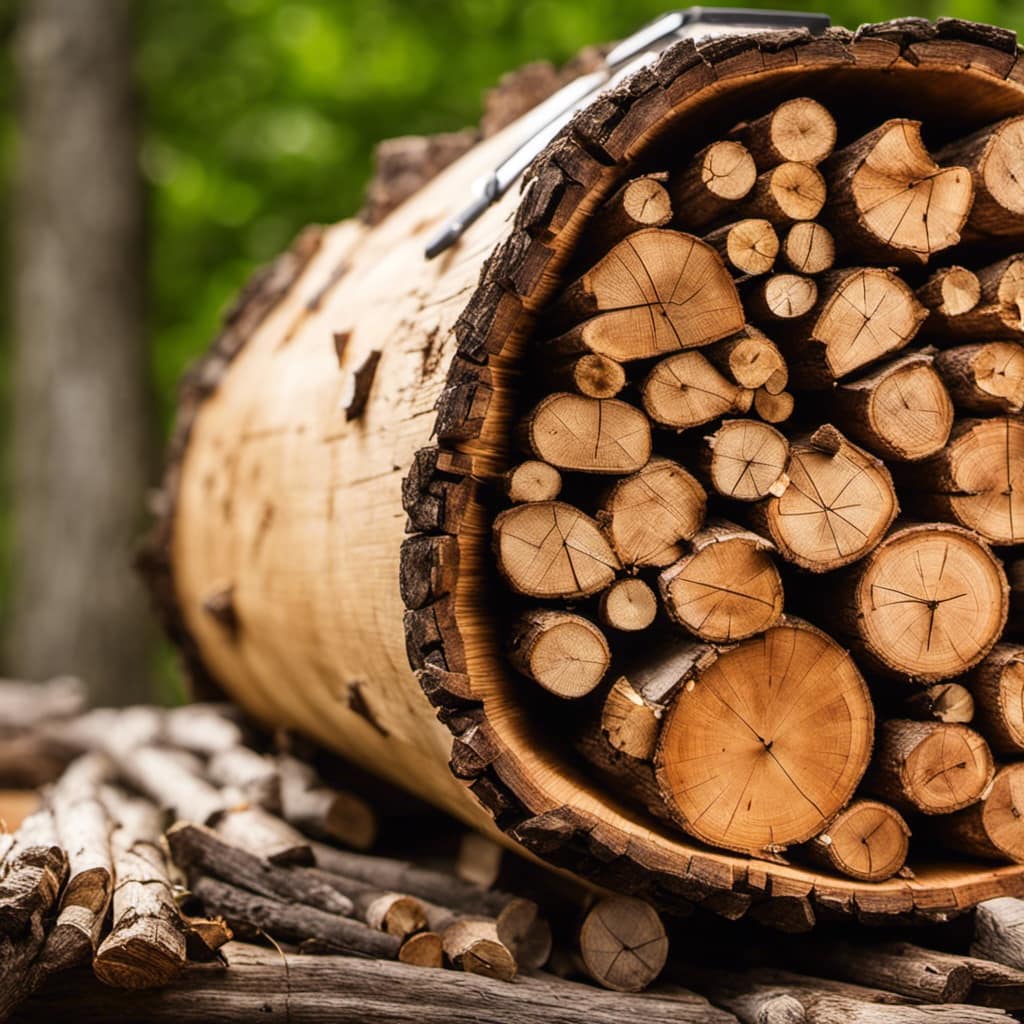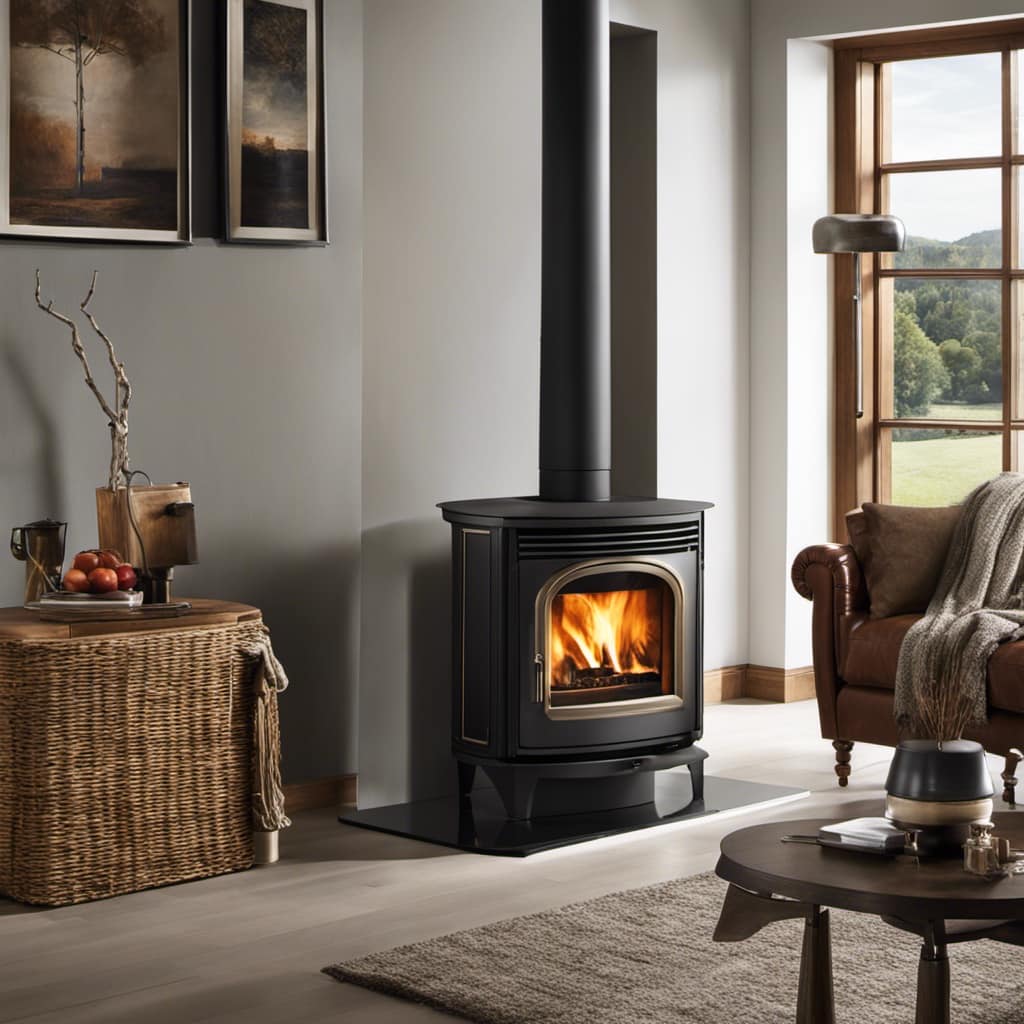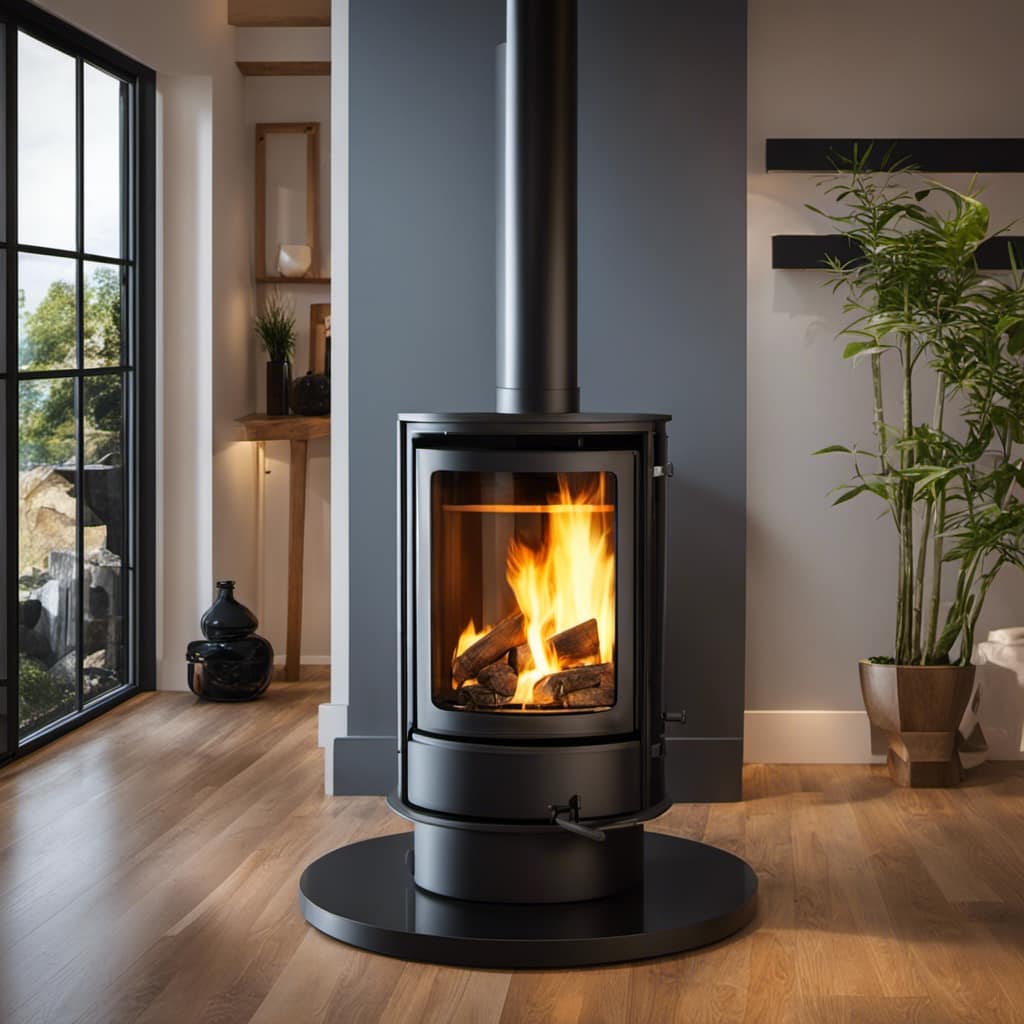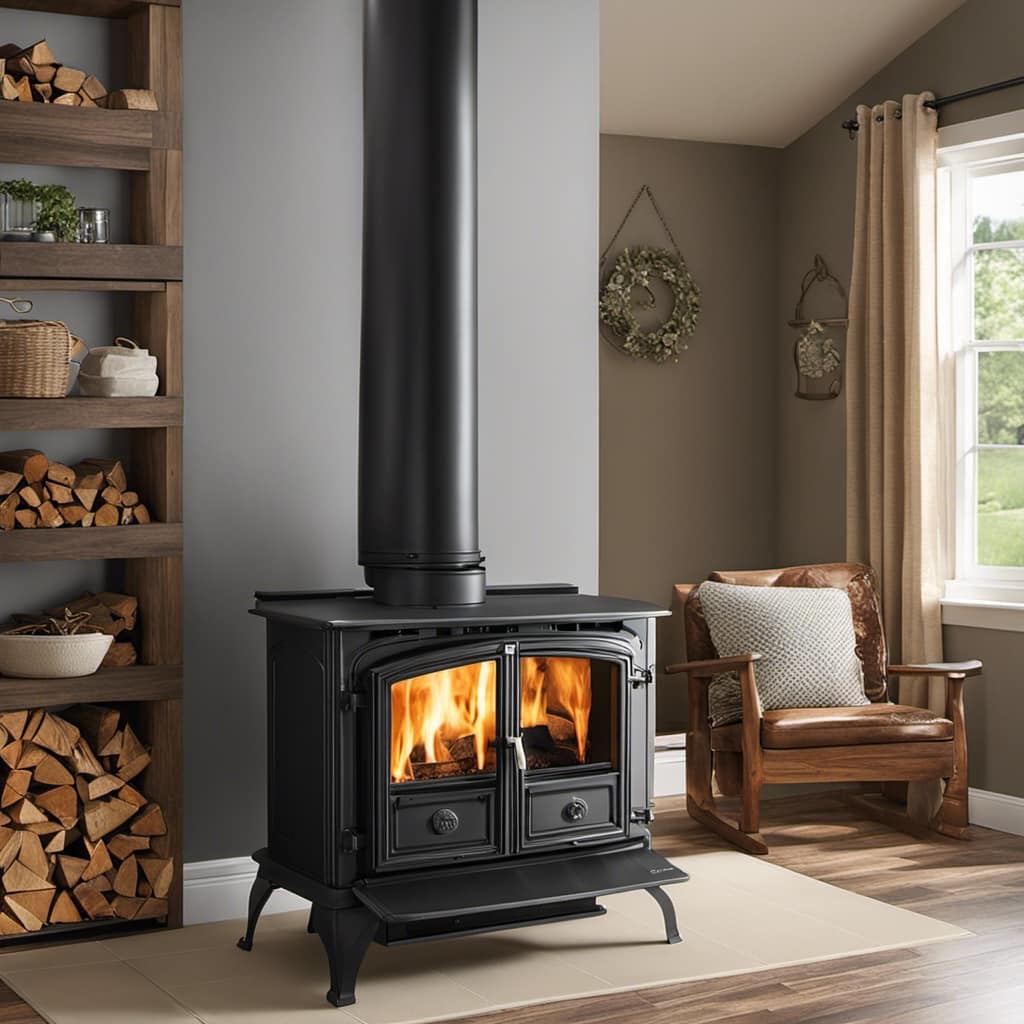
I have found a reliable way to keep the glass on my wood stove spotless. With the proper cleaning solution and a few straightforward steps, it is simple to eliminate tough stains and debris.
In this article, I’ll share my expert knowledge on how to maintain a clean glass surface, ensuring that your wood stove looks its best. Say goodbye to smudges and hello to a crystal-clear view of your cozy fire.
Let’s get started!
Key Takeaways
- Prioritize eco-friendly cleaners for wood stove glass
- Use natural cleaning methods instead of chemical-based cleaners
- Regularly clean the glass to prevent buildup and maintain clarity
- Use a vinegar and water solution or baking soda paste to effectively remove stains and residue
Choosing the Right Cleaning Solution
I always make sure to choose the right cleaning solution for my wood stove’s glass. When it comes to cleaning the glass of a wood stove, it’s crucial to prioritize the use of eco-friendly cleaners and avoid harsh chemicals.

Not only are eco-friendly cleaners better for the environment, but they’re also safer for your health. Harsh chemicals can release toxic fumes when heated, posing a risk to you and your family.
Look for cleaning solutions that are specifically designed for wood stoves and are labeled as eco-friendly. These cleaners are formulated with natural ingredients that effectively remove soot, creosote, and other residues without causing any harm.
Preparing the Glass Surface
To prepare the glass surface of my wood stove, I gently wipe it down with a damp cloth to remove any loose debris. This step is crucial in ensuring that the glass is ready for a thorough cleaning.
Here are three important points to consider when preparing the glass surface:

-
Preventing glass scratches: When wiping the glass, it’s important to use a soft cloth to avoid scratching the surface. Avoid using abrasive materials or harsh chemicals that could damage the glass.
-
Using natural cleaning methods: Instead of using chemical-based cleaners, opt for natural alternatives. A mixture of vinegar and water can be an effective and safe cleaning solution. Simply spray the mixture onto the glass and wipe it clean with a soft cloth.
-
Regular maintenance: Regularly cleaning the glass surface is key to preventing buildup and maintaining its clarity. Make it a habit to wipe down the glass after each use, and schedule periodic deep cleans to remove stubborn residue.
Applying and Scrubbing the Cleaning Solution
After applying the vinegar and water mixture, I gently scrubbed the glass surface with a soft cloth, and then wiped it clean with another cloth. The cloth helps to remove dirt and grime from the surface without scratching it.

The vinegar and water solution acts as a natural cleaner that breaks down grease and residue. By scrubbing in gentle circular motions, I was able to lift off any stubborn stains and dirt particles. It’s important to ensure that the cloth is clean and free of any abrasive materials that could damage the glass.
Once the glass is clean, it’s ready for the next step of removing any remaining stubborn stains and residue.
Removing Stubborn Stains and Residue
In order to remove stubborn stains and residue, I used a mixture of baking soda and water. This natural cleaning method is effective for removing baked-on grease and other tough stains from the glass of a wood stove.
Here are three important steps to follow when using this technique:

-
Create a paste: Mix equal parts of baking soda and water in a small bowl until it forms a thick paste. The baking soda acts as a gentle abrasive that helps to loosen and lift the stains.
-
Apply the paste: Using a clean sponge, apply the baking soda paste to the stained areas of the glass. Make sure to cover the entire surface evenly. Allow the paste to sit for a few minutes to penetrate the stains.
-
Scrub the glass: With the sponge, scrub the glass surface vigorously in circular motions. Put some pressure on the sponge to help remove the stubborn stains and residue. Rinse the sponge frequently and reapply the paste as needed. Continue scrubbing until the glass is clean and the stains are removed.
Maintaining a Clean Glass Surface
I clean the glass surface of my wood stove regularly to maintain its pristine appearance. Not only does regular cleaning enhance the overall aesthetic of the stove, but it also ensures better heat transfer and prevents glass fogging. To achieve this, I rely on natural cleaning methods that are effective and environmentally friendly.

Here is a table outlining my preferred natural cleaning methods:
| Natural Cleaning Methods |
|---|
| Vinegar and water |
| Baking soda and water |
| Lemon juice |
| Newspaper |
Vinegar and water solution is my go-to cleaner for removing stubborn soot and residue from the glass surface. Baking soda mixed with water forms a gentle abrasive paste that effectively removes any remaining stains. Lemon juice is a great natural degreaser and leaves a pleasant scent. Finally, using crumpled newspaper to wipe the glass surface brings back its shine without leaving streaks.
Frequently Asked Questions
Can I Use Regular Household Glass Cleaner on the Glass of My Wood Stove?
I wouldn’t recommend using regular household glass cleaner on the glass of a wood stove. Instead, try using vinegar for cleaning wood stove glass. For streak-free cleaning, you can also use newspaper.
Is It Safe to Clean the Glass While the Wood Stove Is Still Hot?
It is not safe to clean the glass of a wood stove while it is still hot. Proper safety precautions must be taken to avoid injury. There are alternative methods for cleaning the glass without using glass cleaner.

How Often Should I Clean the Glass of My Wood Stove?
Cleaning the glass of my wood stove is essential to maintain its efficiency and aesthetic appeal. Regular cleaning removes soot buildup and prevents glass staining. Here are some tips on how to remove soot and prevent staining on wood stove glass.
Can I Use a Razor Blade to Remove Stubborn Stains From the Glass?
Yes, you can use a razor blade to remove stubborn stains from wood stove glass. However, it is important to be cautious and gentle to avoid damaging the glass. There are also alternative methods for cleaning wood stove glass.
What Should I Do if the Glass of My Wood Stove Becomes Cracked or Damaged?
If the glass of my wood stove becomes cracked or damaged, I should take immediate action to prevent further damage. Repairing cracked glass can be done by replacing the damaged pane.
Conclusion
In conclusion, by following these steps, you can easily maintain a clean and clear glass surface on your wood stove.

The right cleaning solution, proper preparation, and thorough application and scrubbing will ensure a spotless result.
Additionally, tackling stubborn stains and residue promptly will prevent them from becoming permanent marks on your glass.
Remember, a well-maintained glass surface not only enhances the aesthetic appeal of your wood stove but also allows you to enjoy the mesmerizing dance of the flames without any hindrance.
Growing up surrounded by the vast beauty of nature, Sierra was always drawn to the call of the wild. While others sought the comfort of the familiar, she ventured out, embracing the unpredictable and finding stories in the heartbeat of nature.
At the epicenter of every remarkable venture lies a dynamic team—a fusion of diverse talents, visions, and passions. The essence of Best Small Wood Stoves is crafted and refined by such a trio: Sierra, Logan, and Terra. Their collective expertise has transformed the platform into a leading authority on small wood stoves, radiating warmth and knowledge in equal measure.










